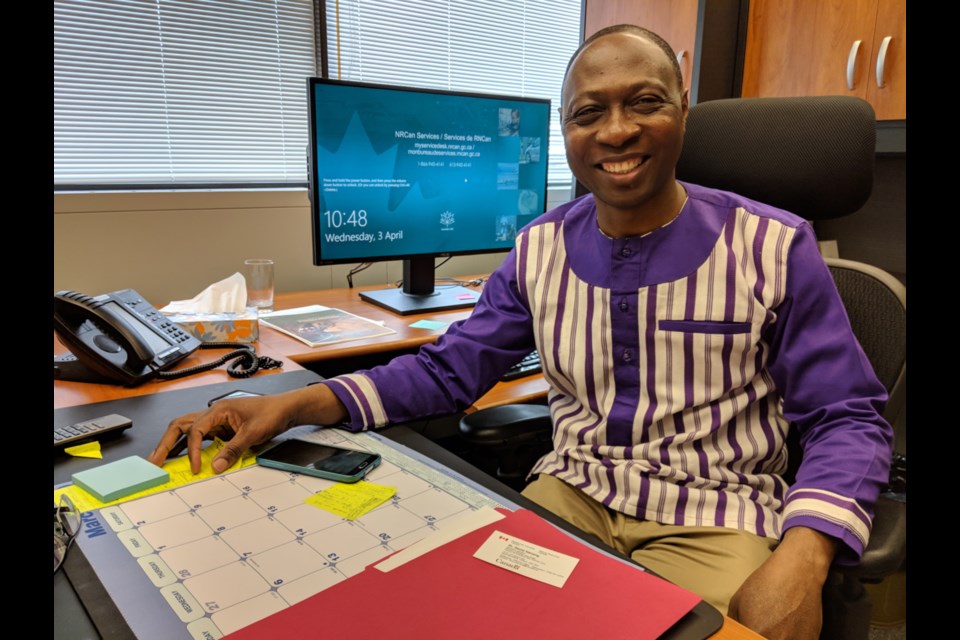As we look around, we tend to take the healthy appearance of much of our forests for granted.
But that is due, in part, to the work done by Dr. David Nanang and his team at the Great Lakes Forestry Centre (GLFC).
There are three components to Nanang’s job.
He oversees the research done within the facility, represents the federal government on forestry issues in Ontario (the feds having five such facilities in various regions of Canada, the Sault office being the government’s Ontario hub) and oversees research on cumulative effects of natural resources development across the country.
“The challenges we face in forestry, and we’re aware the Canadian taxpayers are paying us, are to look out the window and see what issues are affecting our forests and how our research can help to deal with some of those issues,” Nanang said, speaking to SooToday.
One of them, of course, is insect pests.
A forest insect laboratory was opened in 1945 at the corner of Church Street and Queen Street East, north of what was then the Ontario Provincial Air Service hangars. Its construction was in response to a massive outbreak of spruce budworm, which, at the time, was causing major forest defoliation.
A joint research agreement between the federal Department of Agriculture and the Ontario Department of Lands and Forests (1945-1966) had Ontario build and maintain the laboratory while the federal government provided staff and equipment.
The laboratory was the first of its kind in Canada and developed an international reputation for its pioneering research.
The Great Lakes Forestry Centre began with a small field office, a staff of five and one driven entomologist. That group was first led by Carl E. Atwood, a founding developer of GLFC and father of award-winning Canadian author, Margaret Atwood.
In more recent years, the facility’s technicians have devoted themselves to combating invasive species from other countries.
“That keeps us busy,” Nanang said.
“On the wildfire side of it, we also do a lot of work here. We support the fire management teams across the country by providing real time intelligence to fire managers, showing the position of fires, where they’re heading...there are important decisions to be made in allocating resources to many fires across Canada at once.”
And thirdly, Nanang and his team are concerned with climate change.
“Northern Canada is warming fast...so some of our research is ‘how do we manage forests in this new world?’”
Those are a lot of tasks with a lot of challenges, but Nanang commended his team of approximately 120 staff, consisting of research scientists, field technicians, lab technicians and administrative support workers.
“To me, it’s a great place to work, just feeling that you’re making a difference in addressing some of these really difficult challenges. We try to be proactive, especially in terms of climate change, and we try to anticipate and stop more types of invasive species from coming in to Canada.”
“What is rewarding to me is I really feel I am making a difference for Canadians.”
Born in Ghana, Nanang completed an undergraduate degree in natural resources management in his native country, moving to Canada in 1994 and earning a Masters from Thunder Bay’s Lakehead University, then a PhD in forest economics from Edmonton’s University of Alberta.
“I’ve lived in some of the coldest places in Canada,” he grinned.
Working with the civil service in Ottawa, Nanang then moved to the Sault in 2009, taking the helm at GLFC in 2012.
“It’s been a wonderful experience.”
